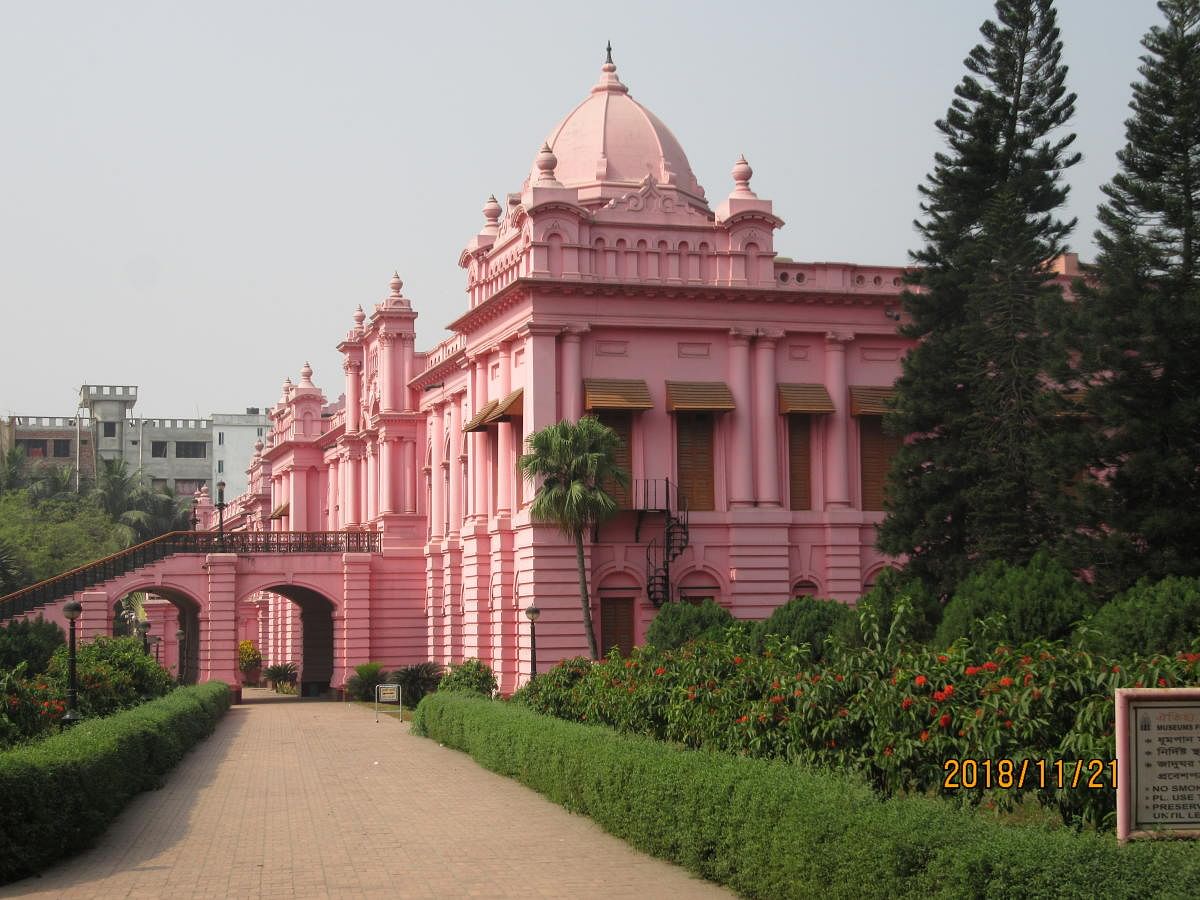
With the Covid-19 pandemic making travel a challenge, it’s time to consider the gems in our neighbourhood. Dhaka never fails to delight the outsider, what with a colossal historical background, the city is home to a broad spectrum of architectural heritage starting from the Mughal Empire to the British Colonialists.
The Suhrawardy Udyan, where the national commemoration to the war of liberation is situated, should be the first spot for every Indian visiting Dhaka. This was where the “Instrument of Surrender” between the Indian and Pakistani armies was signed in December 1971 and East Pakistan became Bangladesh. To mark the spot, a 50-metre high tower of light, called the Swadhinata Stambha, composed of stacked glass panels, has been erected and is surrounded by a water body reflecting the pillar. An eternal flame, known as the Sikha Chirantan symbolising freedom, burns beneath the national flag of Bangladesh with the tower of light as a backdrop.
A very important Hindu place of worship, the Dhakeshwari Temple sits squarely in the heart of bustling Dhaka. The temple was covered (“dhaka” in Bengali) in earlier times by a thick canopy of trees giving the deity its name, Dhakeshwari, meaning Goddess of Dhaka.
Built in the 12th century by a Sena dynasty king, it’s an essential part of the city’s cultural heritage. The Ahsan Manzil is another of Dhaka’s treasures. The official residential palace and seat of the Nawab of Dhaka, the Nawabs conducted their court affairs here. Within the complex is the garden house of Sheikh Enayet Ullah, the landlord of Jamalpur Pargana, whose grave exists in the north-east corner of the palace yard. The charming Sheikh built a Rongmohol and housed pretty girls from around the world dressing them in gorgeous dresses bejewelled with ornaments. The Mughal faujdar of Dhaka, having fallen for one of the beauties, invited the Sheikh to a party only to kill him while he returned home. The Ahsan Manzil of today has become one of the most significant architectural monuments of Bangladesh, a survivor of this sordid but fascinating saga.
Only a cycle rickshaw does justice to the roads near Lalbagh Kella, a 17th-century Mughal fort on the Buriganga River, an incomplete structure built by a Mughal prince who started constructing the fort during his vice-royalty in Bengal but left it half complete, being recalled by his father, Emperor Aurangazeb, to the Mughal capital.
A key tourist attraction in Dhaka, it’s surely worth the trouble of traversing narrow lanes to visit the fort.
Located in Dhanmondi is the Bangabandhu Memorial Museum, the personal residence of the founding father and the first President of Bangladesh, Sheikh Mujibur Rehman. This was where some disgruntled Army officers assassinated the Father of the Nation and his immediate family. The house stands silently shrouded with memories of that gruesome and shocking night in August 1975. The family handed over the house to a trust that now runs the museum. Even today, it’s very painful to go past the poignant reminders of that black night.
As you leave Dhaka, while gazing at a prominently placed mural depicting the Indian victory in Dhaka’s Hazrat Shahjalal International Airport, you can justifiably feel proud that it was here that the Indian Army forced the abject surrender of the Pakistani Armed forces facilitating the birth of Bangladesh. The then-Prime Minister Indira Gandhi’s address to the Indian Parliament — “Dhaka is now the free capital of a free country,” will reverberate in your ears.